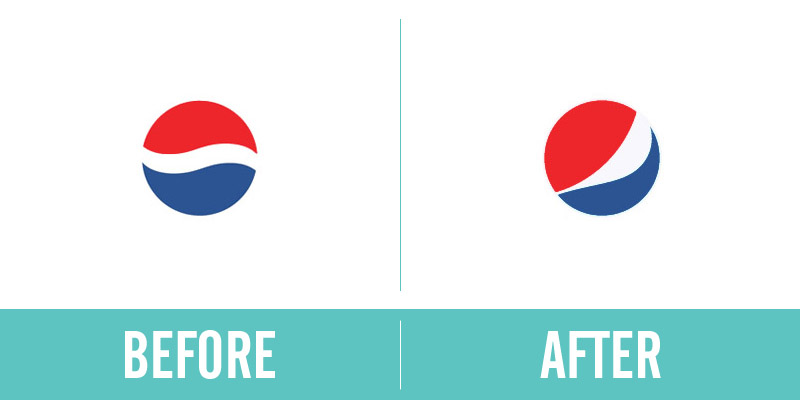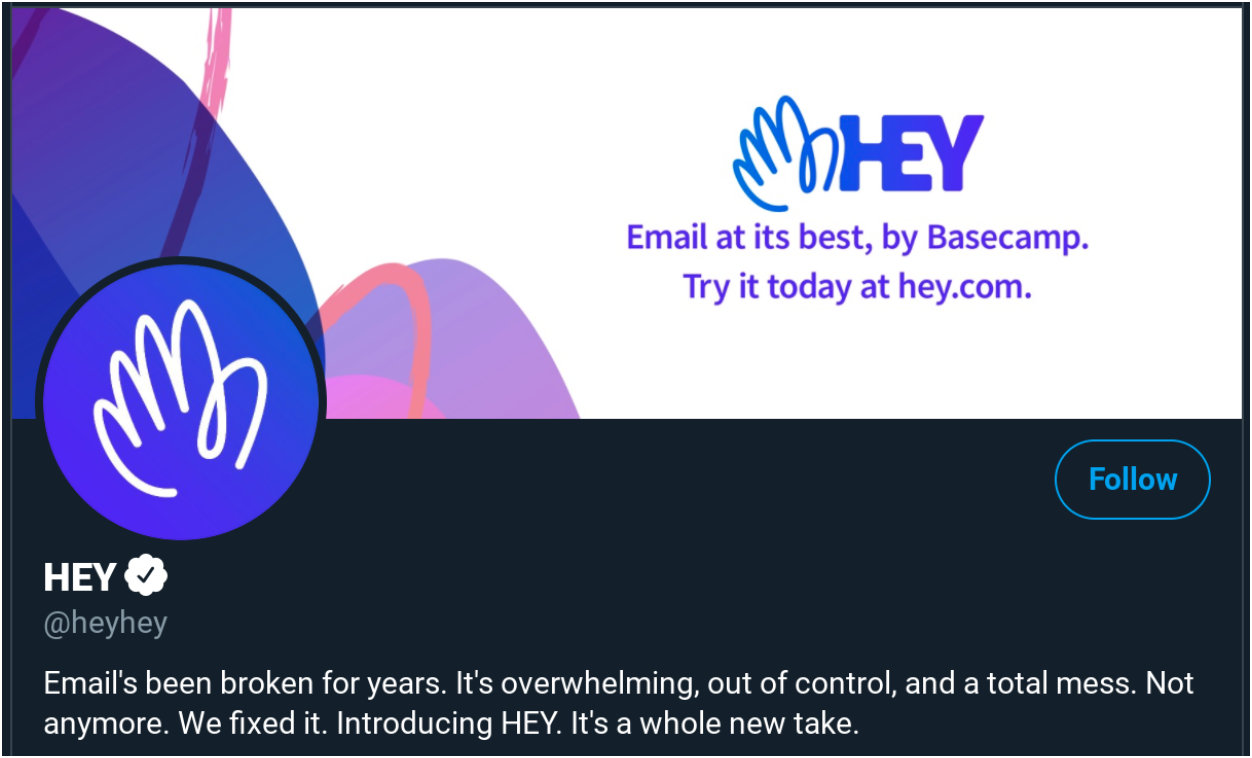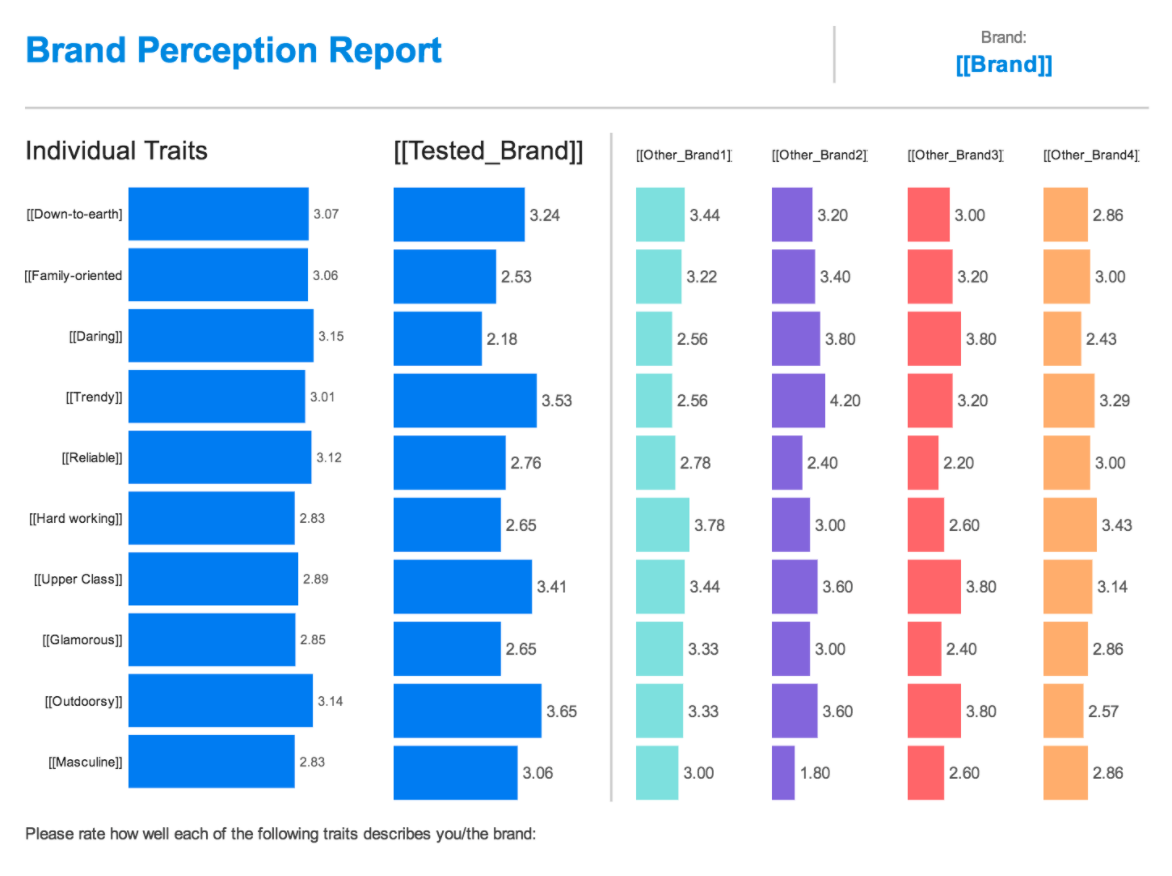Is seeing believing?
Plato didn’t think so. He thought the true nature of reality was beyond what our senses could perceive.
In more modern times, though, everyone from former NFL quarterback Steve Young to Filipino politician Imelda Marcos has taken the opposite position — “perception is reality.” And for brand perception in particular, perceived image is indeed everything.
What is brand perception and why is it important?
Brand perception is how consumers feel about your brand.
Do they see it as trustworthy, a perceived good time/dollar value and something that generally fits into their lives and meets a key need? How they answer these questions determines their brand loyalty and, by extension, every brand’s bottom line.
When Pepsi rebranded with its futuristic globe logo in 2009, many consumers and marketers at the time felt it had cheapened its classic brand image and also muddied its brand identity, making it a less clear brand value compared to Coca-Cola in particular.

On that note, the most important thing to know about brand perception is this: It’s a two-way street.
More specifically, brand perception is not entirely under your control — you can drive it via a focused content marketing strategy and through channels like customer service, but consumers must respond positively for it to gain traction. Pepsi spent $1 million just to refresh its logo, but had to redesign it again a few years later when soda drinkers didn’t warm to the change.
How content marketing drives brand perception
As we can see, no matter what your marketing efforts say about your brand — for example, startup HEY’s mission statement about how it has made email “something you want to use” — they will only benefit your overall brand perception if your target audience shares the sentiment. If they do, that’s positive brand perception; if they don’t, it’s negative brand perception.
This is where adept content marketing, based on knowing and engaging with your target audience, plus continuously tracking both your brand perception and the efficacy of your related brand strategy, is paramount. Let’s look at how HEY has backed up its top-line marketing with sensitive content marketing.

HEY exemplifies positive brand perception, as well as why it’s so important — namely, that great brand perception provides differentiation from competitors and helps drive sales.
The company got a wave of support when it was temporarily banned from the Apple App Store in June 2020 — signups more than tripled while it was in approval limbo, a prime example of earned media’s power. The incident showed that its target audience of email power-users felt the company really had “fixed” email for them, and as such perceived lasting value.
Numerous, highly specific testimonials dot its homepage, to show all the ways in which consumers say HEY has changed their workflows. Here, we can see the two-sided nature of brand perception — what ultimately matters is consumer reaction.

But HEY’s exceptional brand perception didn’t materialize spontaneously, like Athena emerging fully formed from the head of Zeus in Greek mythology. The company leveraged the high existing brand value of Basecamp, along with savvy content marketing across its official website and social media channels.
Its sprawling brand identity manifesto demonstrates how a long blog post, written in a conversational voice, can not only highlight a brand’s value proposition but also make consumers feel valued. Note the second-person language here (“You’re better”):

Meanwhile, its social media strategy — narrowly targeted at its Twitter-using demographic — showcases its lasting value to its target audience. The purple hand-waving logo is inviting, the “by Basecamp” tagline taps into widespread goodwill toward that brand, and the bio identifies all the problems HEY is trying to solve.

Finally, HEY’s social media management shows how brand perception, while not entirely something any brand can control, can still be shaped by particular actions. The account’s social media manager responds rapidly and in detail to their @-mentions, an approach that earns positive reactions if only because of the high level of demonstrated attentiveness to customer service.

Unpacking and tracking brand perception
Brand perception is important to both B2C and B2B firms, albeit in different ways.
Both types of businesses seek to improve their brand perception en route to cultivating customer loyalty. But since B2C companies typically have a smaller window in which to make an impression on the target audience, they often resort to more emotional content marketing designed to elicit an instant response (we can see glimpses of this in the emoji that HEY used in the above tweet).
For a more in-depth instance, look at the social media presence of footwear brand Teva. This Instagram post has a memorable, emotionally targeted opening line (“Our youth will change the world”) a location tag of “The Future” and, most critically, more than 1,000 likes and lots of similarly emotional responses:
View this post on Instagram
In contrast, B2B brands build brand awareness and perception through more direct appeals to material value. Database and cloud computing giant Oracle isn’t going for the emotional jugular — it’s pitching enterprises on monetary value. Oracle’s brand values here are rooted in low costs and technological convenience.

Across both B2B and B2C branding strategies, there are three main components that affect total brand perception:
1. Brand message
Do the products and services you sell live up to their branding?
Positive brand perception requires existing and potential customers who trust your organization to meet their expectations and align with their values. Anything from a reputation for exceptional customer service (like HEY’s Twitter-based support) to compelling discounts can distinguish an organization from competing brands and engender positive brand perception.
Amazon has honed positive brand perception through two proven techniques — member exclusivity and deals. While it is not always the cheapest option, it is perceived as such — or at least as the most valuable and convenient option — by its shoppers. This screenshot from its Prime Day event highlights Amazon’s perceived value as both a members-only club (“your Prime membership”) and an appealing value (“Don’t miss this deal”).

Likewise, its main retail competitor, Walmart, has positioned its Walmart+ subscription service as something that “pays for itself in just two deliveries,” which doesn’t jeopardize any existing discounts customers were getting and that offers other perks — literally, all of Walmart, plus something else.
This is savvy marketing that fosters positive brand perception among the target audience by projecting honesty to, and instilling trust in, consumers before they fork over $98.

2. Brand behavior
When the COVID-19 pandemic struck, brands of all kinds responded rapidly by changing how they operated, which in turn materially altered their brand image and brand perception.
Airlines have not always had the most positive brand perception in the past, due to issues such as fees and delays. However, United Airlines showed how even historically negative brand perception can be reshaped by adept messaging and behavior.

The brand message here is friendly and inviting — “We’re here for you”; note the second-person voice, similar to the HEY manifesto example — while being boldly branded (“United Together”) and accompanied by plenty of ways to take action.
Most vitally, it offers emotional (“get the help you need”) and monetary (“multiple travel waivers”) value, combining aspects of the typical B2B and B2C approaches to brand perception.
Its sensitive approach has been mirrored on its social media accounts. This Instagram slideshow tries to shape the brand perception of United as a company eager to “reunite” with its customers by eliminating change fees.
The CTA to check the bio link initiates a multi-step content marketing journey, as consumers can see a gallery of photos that each lead to a different success story on the company blog.
View this post on Instagram
3. Brand content marketing strategy
Just as beauty is in the eye of the beholder, brand perception is in the mind of the consumer.
In the age of social media, when everyone can engage with and express their feelings about a brand in real-time, any successful brand perception strategy will try to shape this consumer sentiment through content marketing across multiple channels.
Grammar browser add-on Grammarly has used its official blog to promote its tools as something more than just a utilitarian way to write better. In this post, it underscored how Grammarly can support more empathetic writing, with some sensitive context (“In times like these”) and an embedded CTA designed to empower the reader (“Deliver the message you intend”).

On Twitter, it’s readily apparent how consumers have responded to Grammarly’s general strategy of making its users feel powerful and knowledgeable. In this tweet, someone thanks Grammarly for making them feel like a “virtuoso,” reflecting positive brand reception seeded by a content marketing asset, in this case an analytics report on word usage.
@Grammarly is that motivational cheerleading teacher I never had.
Thanks boo.
„I’m a vocabulary virtuoso!“ https://t.co/lYe8QpGPBG
— Nina Sarkar (@NinaSarkar) October 12, 2020
Monitoring brand perception
Brand perception is measured through specific KPIs and methodologies. Let’s break these down by those two categories.
KPIs
- Brand awareness: Do consumers know a brand exists? Without underlying brand awareness (also known as brand recognition), brand perception cannot exist.
- Perceived quality: Does a product live up to a consumer’s expectations in regard to performance, reliability and value? User product reviews are one of many ways to see if a brand has established an overall reputation for quality.
- Common brand associations: “Cheap”; “durable”; “well-designed”; “great value for the money”; “ethical” — these are all attributes that can really stick to a brand’s image and define its brand perception.
- Customer loyalty: Positive brand perception encourages consumers to continue their business relationship with a brand. Proper pricing, great customer service and rewards programs can all contribute to sustained customer loyalty.
Here’s a simple example of how positive brand perception can flow from a reputation for perceived quality. This reviewer notes not only the sound of the Sono Arc soundbar, but the packaging, too. In this way, brand perception is about not just what you say about a product (“Arc — The Premium Soundbar” is how it’s billed) but how you back it up with actions.

Methodologies
- Google alerts: A simple keyword alert can help you track how consumers and competing brands are responding to your brand marketing campaign.
- Brand perception surveys: Brand perception surveys let you measure granular reactions to products and to your broader brand message. Options include customer satisfaction, Net Promoter Score and product-specific surveys.
- User reviews: Reviews like the Sonos Arc one above offer valuable customer feedback about everything from product functionality to pricing, all of which affect total brand perception.
- Social media posts: Responding to social media posts by interested consumers serves a double purpose — first, reading these posts gives you more visibility into current brand perception; second, timely and accurate responses can cultivate positive brand perception.
4 steps toward better brand perception via content marketing
We’ve seen some real-world examples of how brands have used content marketing to change and maintain their brand perceptions, but let’s condense everything into a quick four-step guide:
Step No. 1: Know Your Target Audience
Because brand perception is so consumer-driven, you have to know what consumers are looking for from your brand, whether you are meeting their expectations and how you can best respond to their current perceptions. Brand perception surveys, user stories and reviews and ongoing research are all critical components here and when creating an initial brand positioning statement, too.
Going back to HEY for a moment, that company’s distinctive brand voice — tech-y, sharply focused on specific usability problems and very outspoken — is a perfect reflection of how its parent company’s customers talk about their challenges. Here’s one customer story from Basecamp:

Across their content marketing efforts, Basecamp and HEY address these customer perceptions of their brands as reliable problem-solvers, by constantly emphasizing the relative ease-of-use of their products.
It’s a virtuous cycle: Customers talk about the problems that Basecamp and HEY solved, the two brands highlight that customer feedback in their marketing pitches and then more customers sign up, confident they will get the same experience. Monitoring brand perception literally pays off.
Step No. 2: Match Form With Content
If your brand message is all about how you always offer the lowest prices, it doesn’t make sense to do your content marketing via paywalled articles and premium subscription-based podcasts.
On the converse, if you have a brand perception as a luxury experience, then cut-rate production quality in your social media posts or cheap-feeling packaging (remember how important the Sonos Arc’s box, as a supplement to its “Premium Soundbar” branding, was in that Google review?) won’t suffice.
The lesson: Choose content marketing forms — that is, channels (social media or otherwise), production values, brand messages and influencer accounts — that match the actual content being delivered. Consider using a style guide as well for consistent messaging and imagery.
Hermès shows how form and content can be precisely aligned to reinforce existing brand perception. This Instagram post is notable for its fantastic lighting and coloration, something that top commenter identifies right away (“Great image”). Such attention to detail fits the brand perception of Hermès as both high-priced and high-quality.
View this post on Instagram
Step No. 3: Be Consistent Across Channels
Brand perception is fundamentally built by consumers forming associations with a brand.
Negative brand perception can be the result of a confusing, inconsistent brand message or brand image across channels. But positive brand perception is almost always the product of consistent company branding, messaging and behavior that collectively “stick.”
B2B cloud communication platform Twilio doesn’t have the naturally easiest brand message to communicate to its target audiences — it builds APIs — but its sharp, consistent content marketing helps its pitch hit home.
Language about “building” shows up in its public-facing user guide, alongside the red color associated with the Twilio brand image:

On Twitter, the same brand message comes across, complete with “build” in the same hue of red:

Step No. 4: Be Reactive As Well as Proactive
Brand perception requires a lot of proactive planning and marketing strategy to build brand awareness and create concrete associations. At the same time, it must be reactive, too, since consumer perceptions are always evolving and it’s crucial to keep a finger on the audience’s pulse.
Reading online reviews, performing periodic brand perception surveys and responding to social media posts/mentions are among the most important “reactive” components of a marketing strategy.
This brand perception survey template from Qualtrics shows how you can measure specific traits of brand perception in relation to competing brands, something that should be done regularly, including in response to new product launches and campaigns from competing brands.

Building brand perception your way
The four steps above are just a general guide. Each company’s road to positive brand perception will be unique, paved by its particular brand message and the expectations of its current and potential customers. There is always a place for content marketing, though, as a branding tool for informing target audiences and responding to their aspirations.





